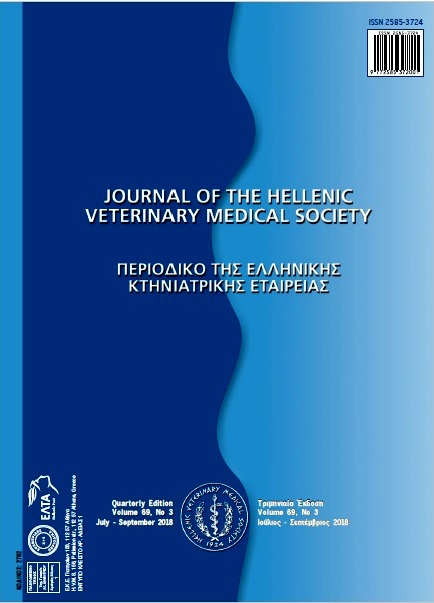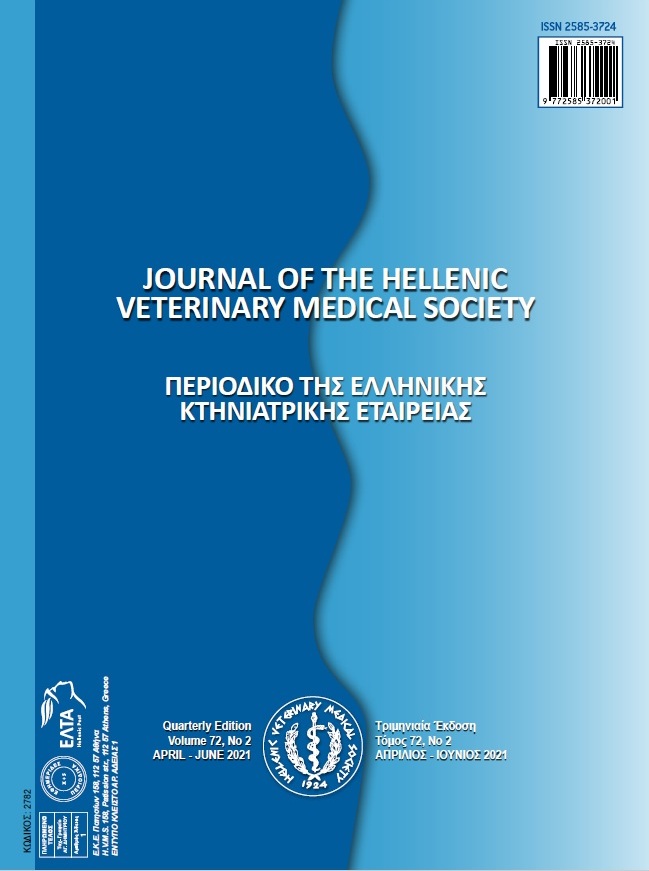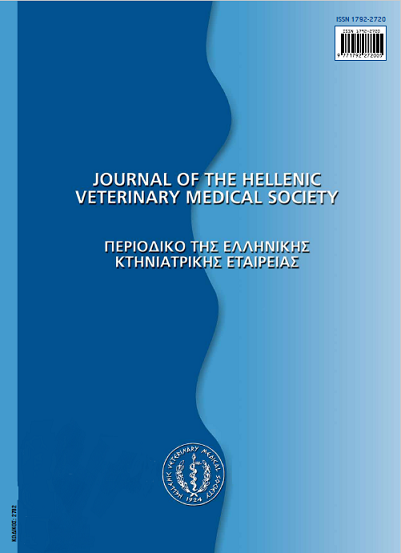Sesamoid disease in two dogs

Abstract
Two young dogs, a Rottweiler and an Épagneul Breton, presented with chronic forelimb lameness. Orthopaedic examination confirmed the mild lameness and revealed pain on deep palpation at the palmar aspect of the 5th metacarpal. Radiographic evaluation revealed fracture of the 7th metacarpophalangeal sesamoid at the 5th metacarpophalangeal joint. Based on these findings, diagnosis of sesamoid disease was achieved. Both cases had been treated conservatively with restricted activity and anti-inflammatory drugs without any success. Then, resection of the affected sesamoid was performed. The outcome was good and the dogs were free of lameness 1 year post-operatively.
Article Details
- How to Cite
-
KARKANIS, A. F., PRASSINOS, N. N., KAZAKOS, G., KTORIS, M., ANTONOPOULOS, K., & KRYSTALLI, N. (2018). Sesamoid disease in two dogs. Journal of the Hellenic Veterinary Medical Society, 69(3), 1148–1154. https://doi.org/10.12681/jhvms.18888
- Issue
- Vol. 69 No. 3 (2018)
- Section
- Case Report

This work is licensed under a Creative Commons Attribution-NonCommercial 4.0 International License.
Authors who publish with this journal agree to the following terms:
· Authors retain copyright and grant the journal right of first publication with the work simultaneously licensed under a Creative Commons Attribution Non-Commercial License that allows others to share the work with an acknowledgement of the work's authorship and initial publication in this journal.
· Authors are able to enter into separate, additional contractual arrangements for the non-exclusive distribution of the journal's published version of the work (e.g. post it to an institutional repository or publish it in a book), with an acknowledgement of its initial publication in this journal.
· Authors are permitted and encouraged to post their work online (preferably in institutional repositories or on their website) prior to and during the submission process, as it can lead to productive exchanges, as well as earlier and greater citation of published work.





